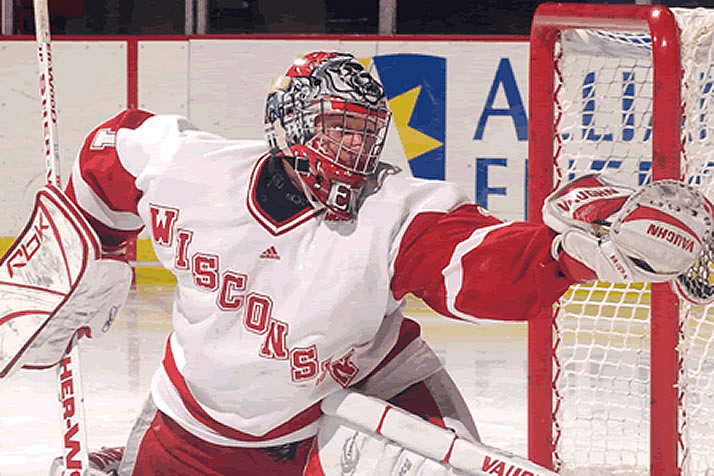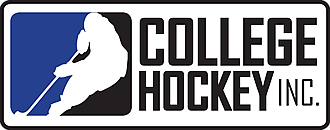Wednesday, January 25, 2012
Goalies in Spotlight at All-Star Game

Former college hockey goaltenders will be in the spotlight this weekend in Ottawa, as four of the six goalies selected for the NHL All-Star Game developed in NCAA Division I.
Brian Elliott (Wisconsin), Jimmy Howard (Maine), Jonathan Quick (Massachusetts) and Tim Thomas (Vermont) will be at the festivities and providing the latest proof of the success college hockey has had in producing elite goalies.
Each of the last three Vezina Trophy winners has had a college background (Thomas twice, Ryan Miller once). Sixteen former college goaltenders have appeared in the NHL this season, and include the league leaders in goals-against average (Elliott), save percentage (Elliott), wins (Howard) and shutouts (Quick).
Tradition of College Goalies
This success isn’t new. Many of the first NHL stars to come out of college hockey were goaltenders, dating back to Ken Dryden (Cornell), Tony Esposito (Michigan Tech) and Frank Brimsek (St. Cloud State).
There are good reasons for college hockey’s success at the position.
“Goalies take the longest to develop into full-time NHL players,” said Jeff Dwyer, Director of Education and Recruitment for College Hockey, Inc. “Because of that, a lot of these guys go to college, and they are given four years to develop. There’s not a rush to turn pro at the age of 20.
“College allows the goalie to stay in school until he’s 22, 23, sometimes even 24 years old,” he added. “It allows him to mature both physically and mentally. A lot of those guys step out of school ready for the American Hockey League because they are older. They spend less time there and are ready to transition to the NHL.”
Talking About Practice
While some of these examples, like Howard and Quick, have left school early, half of the former college goaltenders in the NHL spent all four years at school. Even those who spend two years in college, like Quick, benefit from the additional practice time.
“In college, you spend a ton of time in practice with your goalie coach, going over the angles and facing a lot of shots,” Dwyer said. “The college schedule allows goalies to spend that time working on the technical side of their game. It’s usually just two games a week, so you have four or five days to be on the ice with your goalie coach, not to mention video work and off-ice conditioning.”
Ryan Miller, playing on a Michigan State team with future NHLers Shawn Horcoff, Adam Hall, John-Michael Liles and Jim Slater, among others, certainly found that to be the case.
“We had a great team with some great players,” said Miller, who started the 2007 NHL All-Star Game. “We had some great practices and it gave me time to develop as a player. I benefited from the extra time on the ice perfecting my craft.”
The four former college goaltenders in Ottawa this weekend will also be staring down some great shooters.
While NHL All-Star Games are typically unkind to goaltenders, the 2012 edition will be fun to watch for fans of former college goalies.
2012 NHL All-Stars
Brian Elliott, Wisconsin
Jimmy Howard, Maine
Phil Kessel, Minnesota
Jonathan Quick, Massachusetts
Ryan Suter, Wisconsin
Tim Thomas, Vermont
Jonathan Toews, North Dakota*
All-Star Rookies
Justin Faulk, Minnesota Duluth
Colin Greening, Cornell
Carl Hagelin, Michigan
Nick Johnson, Dartmouth
Matt Read, Bemidji State
Craig Smith, Wisconsin
* injured, will not play
